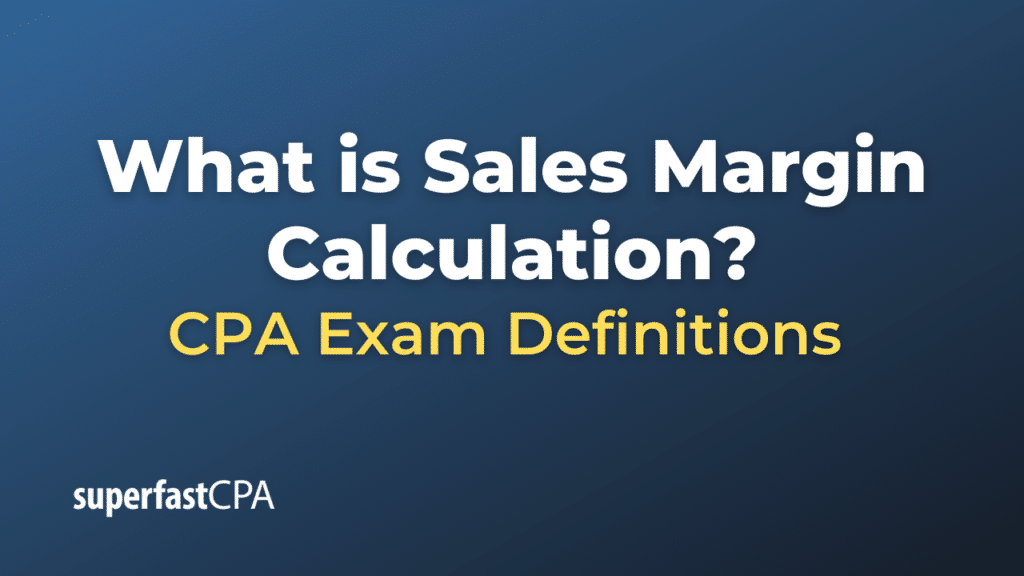Sales Margin Calculation
Sales margin, often referred to as profit margin or gross margin, is a measure of profitability. It represents the percentage of total sales revenue that a company retains after incurring the direct costs associated with producing the goods or services sold. The sales margin gives an idea of the company’s profitability at a raw, operational level.
The formula to calculate the sales margin (or gross margin) is:
Sales Margin (Gross Margin) = (Sales Revenue − Cost of Goods Sold (COGS) / Sales Revenue) × 100
Where:
- Sales Revenue is the total revenue from goods sold or services provided.
- Cost of Goods Sold (COGS) represents the direct costs associated with the production of the goods sold by a company. This includes raw materials, labor costs directly associated with the production, and factory overheads.
The result is expressed as a percentage, and the higher the percentage, the more the company retains on each dollar of sales, which can contribute to its other expenses and potential profits.
Example of Sales Margin Calculation
Let’s dive into a detailed fictional example to understand the sales margin calculation.
Scenario: “BlueSky Tech Store” sells electronic gadgets. In March 2023, they had the following figures:
- Total Sales Revenue: $500,000 (This includes sales from laptops, smartphones, headphones, and other electronic gadgets.)
- Cost of Goods Sold (COGS):
- Purchase of laptops: $200,000
- Purchase of smartphones: $150,000
- Purchase of headphones: $25,000
- Other electronic gadget purchases: $75,000
- Total COGS = $200,000 + $150,000 + $25,000 + $75,000 = $450,000
Now, using the sales margin formula:
Sales Margin = (Sales Revenue − COGS / Sales Revenue) × 100
Plug in the values:
Sales Margin = (500,000 − 450,000 / 500,000) × 100
Sales Margin = (50,000 / 500,000) ×100
Sales Margin = 0.10 × 100 = 10%
So, “BlueSky Tech Store” has a sales margin of 10% for the month of March 2023. This means that for every dollar the store made in sales, they retained $0.10 as gross profit after accounting for the direct costs of the products. The remaining $0.90 out of every dollar was spent on acquiring the products they sold.
This 10% margin is before considering other expenses like rent, salaries, utilities, and marketing. Such expenses would be subtracted later when calculating net profit margins.













